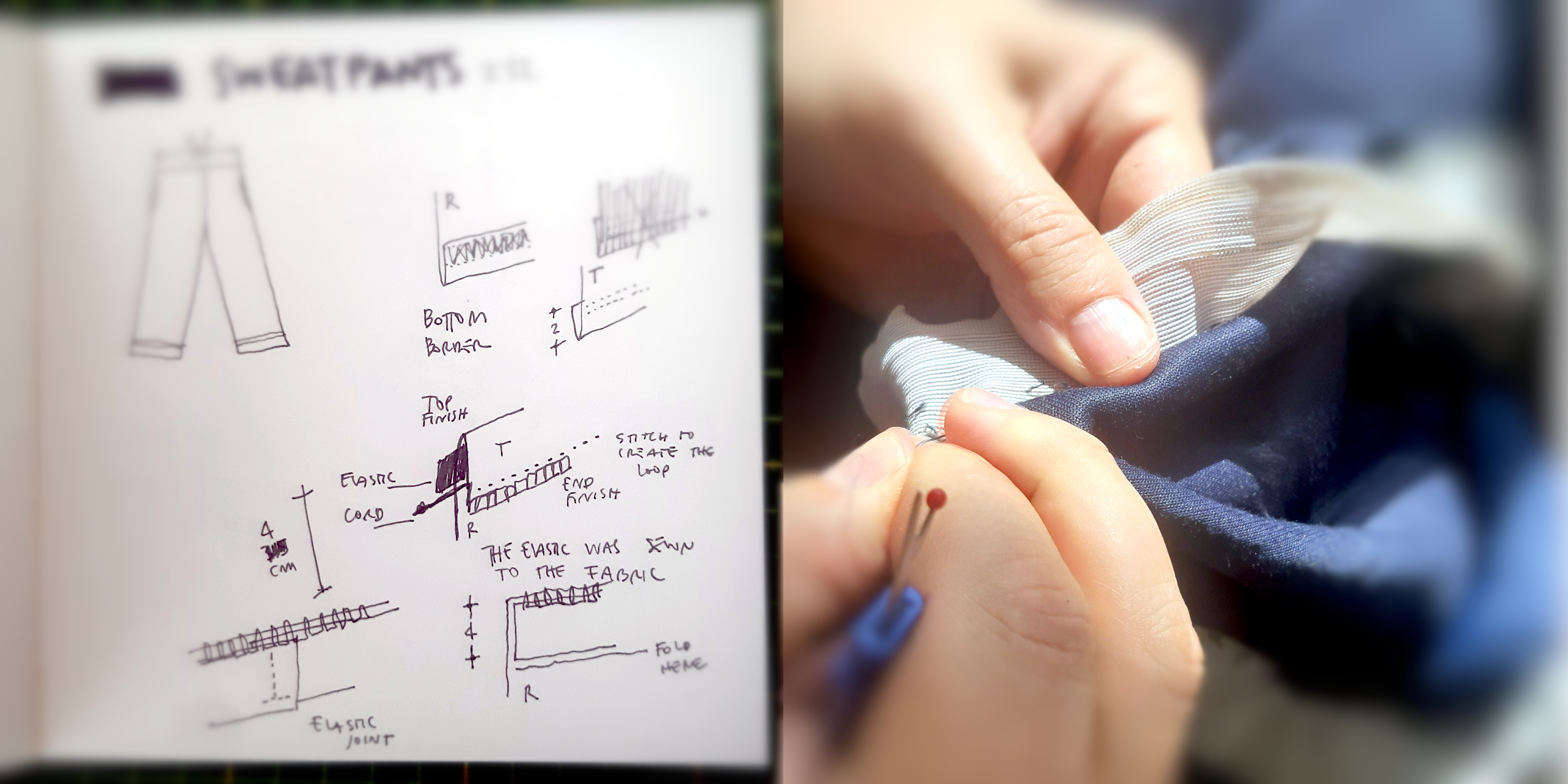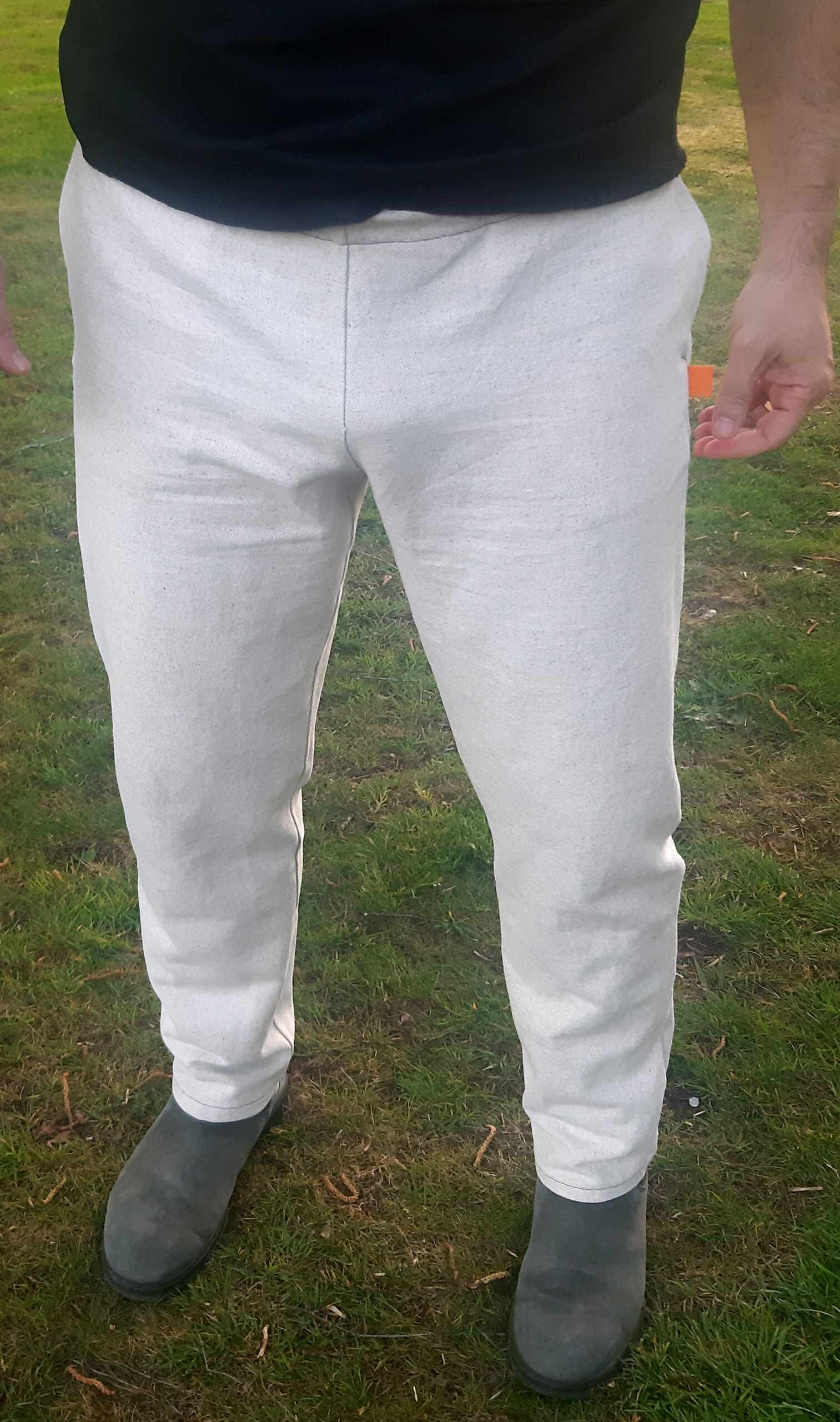This weekend, for some reason, I felt the urge to replace a pair of perfectly functional and comfortable plastic pants with something healthier. I kept repeating to myself that it’s because I wanted to stop shedding microplastics. In reality, I could not wait for Won Hee‘s patterns to make a demo item to showcase Kombinat Konopny‘s panama fabric. This is a material that we will use four our luxury basics and I plan to wear these pants on the day I meet the first crew of wear | us in Brussels. But don’t tell anyone because it’s a surprise.
The picture in the header is somehow the recap of the process: disassemble the pants to get the pattern, reassemble the pattern with the new fabric, deal with the scraps.

Disassembling
I’ve been using the little cutter with the red ball on the tip for a while already, on other un-stitching projects. To be honest, it’s always been a less than rewarding experience. Until last Friday, when the social media deus-ex-machina showed me a tutorial to confirm that the little red ball has its own function. Of course. So this time disassembling was almost joy.
As I take apart a piece of garment I always feel the urge to take notes of how things are put together. It’s more of a drawing exercise than anything else, because I never go back to the sketches, and I always keep half of the garment intact as a reference. However I like the sense of safety it gives to have the process written down, and the result is an interesting reversed step by step process that starts from the last thing I need to do (the first seam I unstitch is the last I will sew) and ends with what I need to begin with.
Reassembling

Panama is a very thready fabric that tends to fray a lot, so the first thing I did was to finish all borders with a special stitch to prevent the fabric from coming apart. After that, I asked chatGPT the proper order to put together the pants, because I was not sure. So finally the order is: front pockets first, then the inside seam that connects front and back panels, then the crotch line, then the outside seam, then the waist, and finally the hem.
This is a pair of pants with no zipper and no elastic at the waist (no plastics, thanks), so it was relatively easy to put together. I still didn’t get the stitching of the pockets 100% right, but the final result is more than acceptable, I guess. A couple of small creative touches I added were to move the holes for the waist cord to the inside (90% chance, I didn’t plan for it, it just happened), and to sew with black thread, because it reminds me of the ink pen I use to draw.
I love the way they feel, and since I am still ignorant in so many ways, when I started the project I didn’t worry about the fabric not being stretchy like the original. It turned out that the size is just good for me to fit without need for stretch.
Scraps
One of the things I really like about working with 100% natural and compostable fabric is that I do not have to worry about the scraps. Hemp is an amazing material that nourished soil, so it’s perfect for composting. However I think that at least for now I will just shred the scraps to use them as fillings for other items.
As far as the plastic pants, they will be placed in a bag as immortal reference for the very few other pants I will want to put together in the future.
By the way…
Do you like the pants? Would you buy a pair? Should I make a pattern for downoad? Let me know in the comments…


Leave a Reply